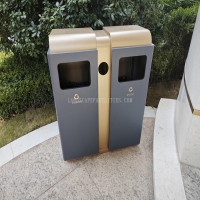Welcome to the website for landscape facilities products and knowledge.
How do landscape tables in beachfront properties handle sand and saltwater exposure?
Beachfront properties offer stunning views and a relaxing atmosphere, but they also present unique challenges for outdoor furniture—particularly landscape tables exposed to sand and saltwater. To combat these elements, manufacturers use specialized materials and designs.
1. Durable Materials
High-quality beachfront tables are often made from corrosion-resistant metals like aluminum or stainless steel, treated woods such as teak, or synthetic materials like marine-grade polymer. These resist rust, warping, and degradation from saltwater.
2. Sand-Resistant Designs
Tables with smooth, non-porous surfaces prevent sand from sticking, while slatted or perforated designs allow sand to fall through easily. Some feature removable trays for quick cleaning.
3. Protective Coatings
Powder coatings or marine-grade sealants add an extra layer of defense against saltwater corrosion, ensuring long-term durability even in harsh coastal conditions.
4. Easy Maintenance Features
Rinsing with fresh water and occasional waxing helps preserve the table’s finish. Many modern designs also incorporate UV-resistant finishes to prevent sun damage.
By choosing the right materials and maintenance practices, beachfront landscape tables can remain functional and stylish despite constant exposure to sand and saltwater. Investing in high-quality, weather-resistant furniture ensures lasting enjoyment of outdoor coastal living.
Related search:

Recommendation
Double-bucket garbage bin, outdoor, metal, multi-color, powder-coated, double-bucket trash can